
Illustration © Sheri Amsel
Slender popcornflower: Species at Risk recovery
Gulf Islands National Park Reserve
The story of the tiny slender popcornflower (Plagiobothrys tenellus) will captivate you, whether you love plants or not. Learn about how Parks Canada scientists worked with our neighbours to rescue this rare flower and what you can do to help.
Three reasons to love the slender popcornflower:
1. It’s extremely rare
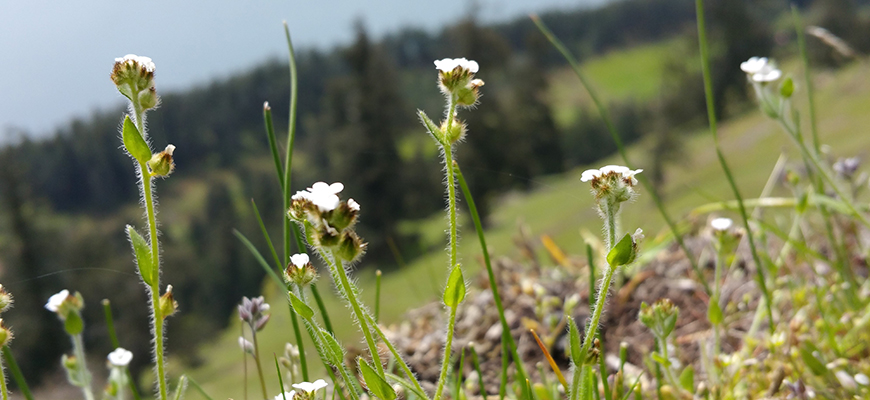
Mount Warburton Pike on Saturna Island may be the only place in all of Canada where this tiny plant grows. While development and invasive plants have crowded it out of other areas, the slender popcornflower still clings to these slopes.
2. It’s a tiny beauty
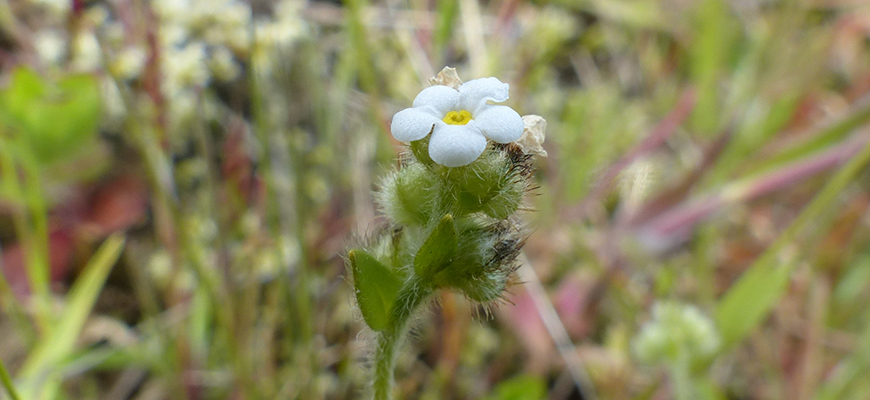
Sometimes you need to pay attention to spot the beauty around you. To see the slender popcornflower, you need to crouch down and put your nose almost to the ground.
This plant’s flowers are smaller than the head of a tack and only bloom for a few weeks of the year. Despite its size, the flower surprises you with its charm. It shines with five creamy white petals around a buttery yellow centre.
3. It’s not a fighter
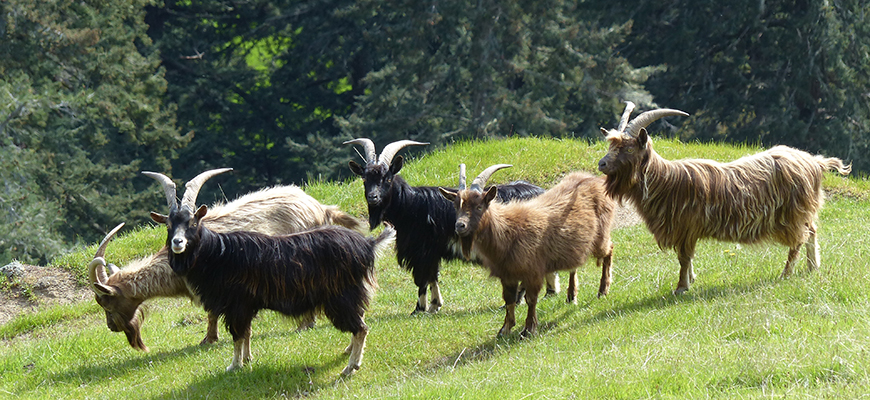
Who can resist cheering for the underdog? The slender popcornflower doesn’t stand a fighting chance against bigger, stronger invasive plants like Scotch broom.
Its survival in Gulf Islands National Park Reserve depends partly on an unlikely ally: a herd of feral goats.
Everywhere in the world, feral goats on islands spell disaster for native plants. That’s mainly true in the park reserve as well. Except for in the case of our tiny friend, the slender popcornflower. Here, the goats graze on the competition, creating open patches in the dirt for the rare plant to grow.
Three ways to care for the slender popcornflower:
1. Look out for the little plants
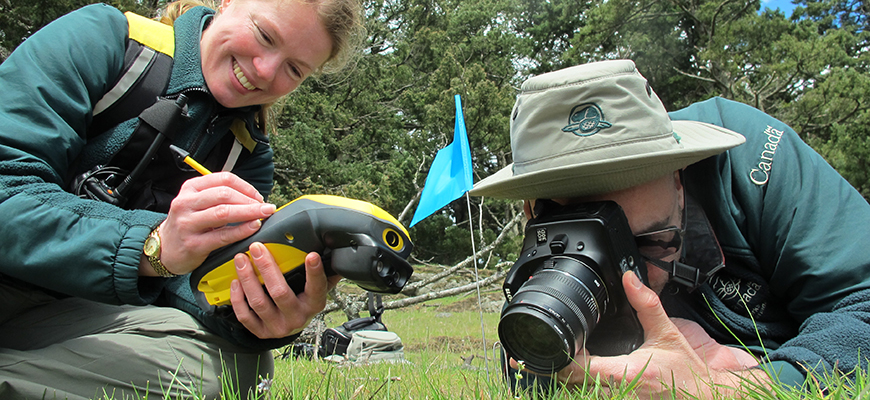
Species at risk are protected in national parks, but sometimes plants and animals in trouble need more than protected areas; they need help from us to recover.
Parks Canada’s action:
Every spring, park scientists check the slopes of Mount Warburton Pike for the slender popcornflower. They record each group of plants with a GPS, looking for changes in distribution and population size.
On one annual monitoring trip, they discovered a large cluster of this rare plant growing on the neighbour’s property. They nicknamed this area ‘The Popcorn Bowl’.
Action you can take:
Appreciate that Canadians value our natural heritage enough to protect it through agencies like Parks Canada. That’s all. Just spend a moment of appreciation.
2. Give a helping hand
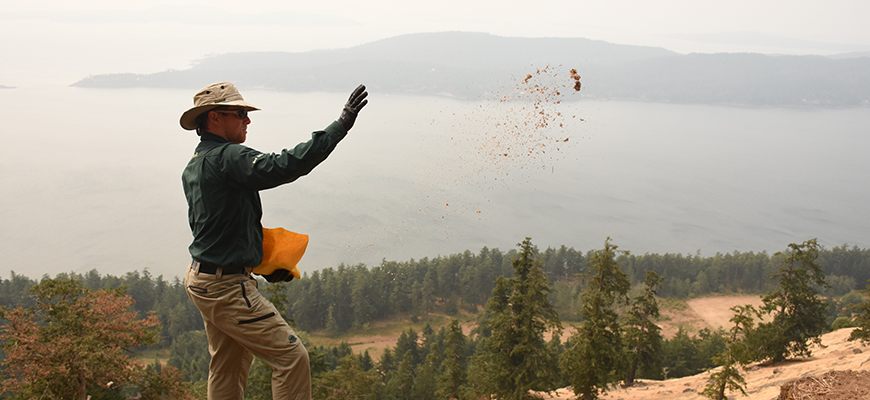
Species-at-risk recovery often requires teamwork.
Parks Canada’s action:
Parks Canada scientists began the project of spreading the slender popcornflower from the neighbouring farm onto protected park reserve land.With the permission of the neighbours, they gathered seeds and grew them in a conservation nursery at nearby Fort Rodd Hill National Historic Site. After a year, these nursery-grown plants produced many more seeds. Then, the scientists planted these in Gulf Islands National Park Reserve and waited.
Success! New plants spouted. Now this rare plant has better odds of survival in Canada.
Action you can take:
Find out more about the plants that are native to your area. Give them a helping hand by planting their seeds. Make sure to find a source of cultivated seeds, not wild ones.
3. Spread the word
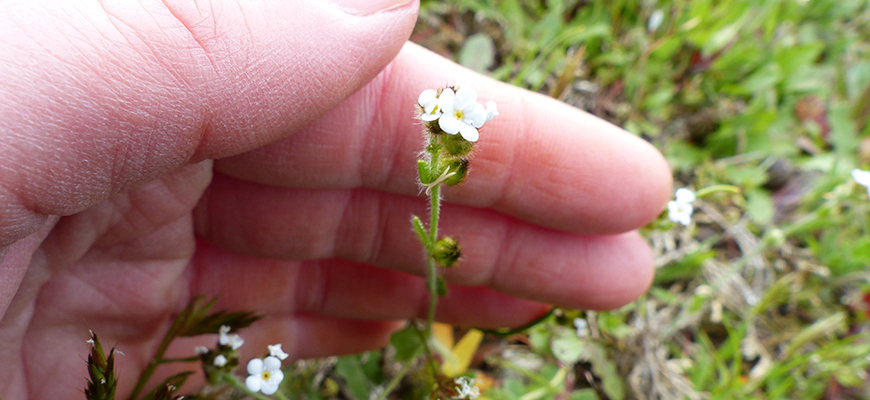
Parks Canada protects significant examples of Canada’s natural heritage. But this can’t happen without your help.
Parks Canada’s action:
We posted a sign on Mount Warburton Pike, sharing our success story about restoring the slender popcornflower. We’re also getting the word out in other ways, like on this web page or in programs with park reserve interpreters.Action you can take:
Share the story of the slender popcornflower recovery. Support all efforts to preserve wild diversity. Stay on trails and tread carefully.
Learn more about barn swallows and species at risk recovery
- Date modified :